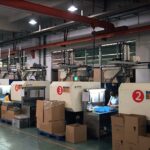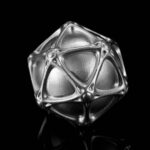In this article, we will shortly introduce three industrial prototyping ways. We think it will be very helpful for clients to make the right choices according to its application and the material itself.
Three industrial prototyping ways for one Goal – Get a prototype rapidly
When do we need industrial prototyping? Simply speaking, when we need to quickly make a sample without making a molding before it, we can use it. Everything we need to do is find a professional rapid prototyping factory, send CAD drawings and pay small money.
You get several pieces of working or half-working prototypes in a parcel in three days. Very importantly, you can use the prototypes to verify the structure and appearance of your design. Naturally, you can avoid spending more than a month making a mold and producing pieces of samples.
Virtually speaking, in the past years, the techniques and precision of prototyping have increased a lot. A lot of big corporations are taking rapid prototyping for their prosperous business.
Firstly let’s see CNC rapid prototyping
Due to its relatively high processing accuracy, CNC machining is currently the most widely used method for producing prototypes. Prototypes made through CNC machining have advantages such as good toughness, high tensile strength, and low cost. There are many materials suitable for CNC prototyping, such as ABS, PC, PMMA, PP, aluminum, copper, etc. When producing fixtures and jig products using CNC machining, materials commonly used are electric wood and aluminum alloy.
Vacuum Casting
Vacuum casting involves using the original model to create a silicone mold under vacuum conditions, and then pouring PU material under vacuum to clone a new model.
Generally speaking, compared to the original model, the new model cloned using the vacuum casting process is more heat-resistant, with higher strength and hardness. By using the vacuum casting process to produce prototypes, we can also change to different materials from the original model based on actual needs, enhancing the hardness, texture, and functionality of the new prototype. Additionally, we can use more affordable materials based on actual requirements.
Vacuum casting can significantly reduce the cost of prototype production. If you need to make several sets or dozens of prototypes, the cost of using the vacuum casting process is generally much lower compared to CNC machining.
3D Printing Prototyping
3D printing is a typical rapid prototyping technology. It involves using powder, linear plastic, or liquid resin materials to construct objects layer by layer.
Compared to the two processes mentioned above, the main characteristics of 3D printing are:
Fast prototyping speed. How fast is it?
Generally, the speed of 3D SLA prototyping is three times faster than CNC prototyping. Therefore, for relatively small objects and small-batch prototyping, 3D printing is the preferred method for many customers.
High precision and low error in the produced prototypes
Since 3D printers are fully automated, the prototypes produced have high precision and low model errors, with the smallest error controllable within ±0.05mm.
More compatible materials
There are many materials suitable for 3D printing prototyping, with over thirty types currently available, including even metal materials such as stainless steel and aluminum alloy.



